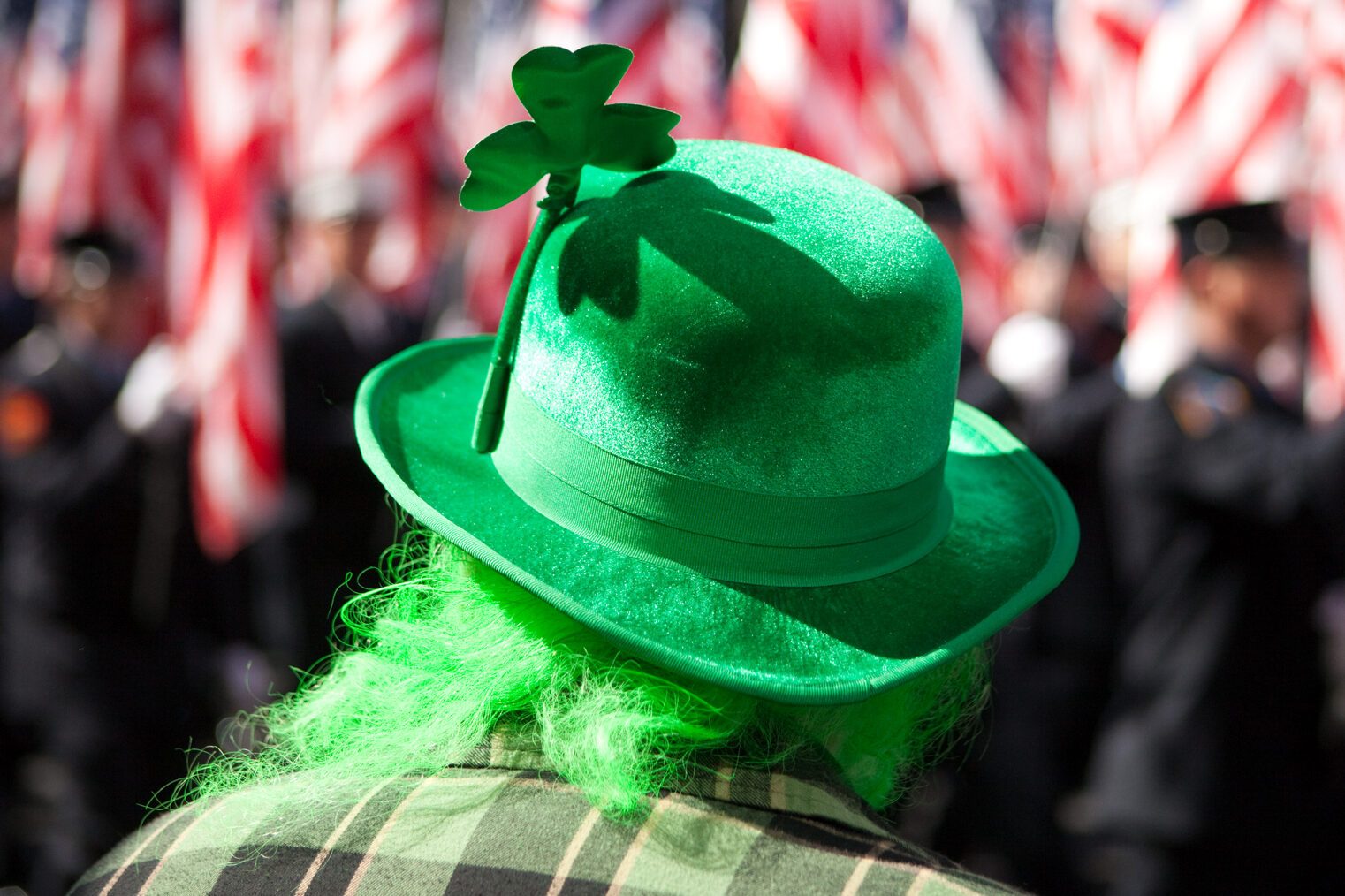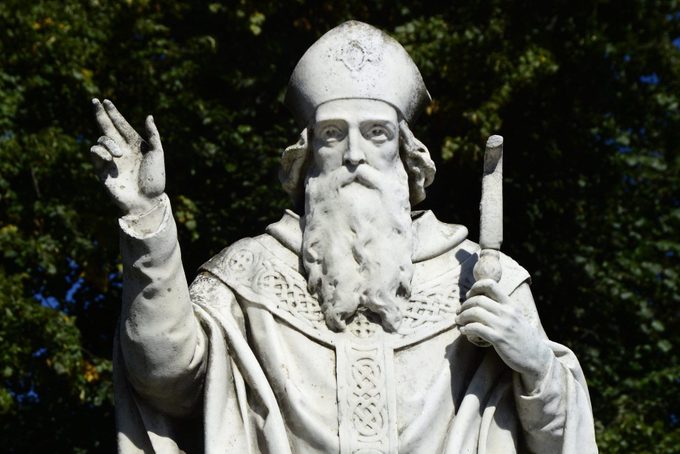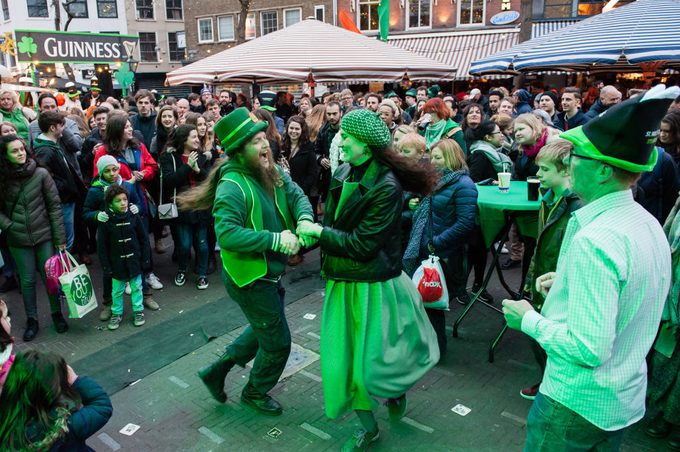We’re settling the "St. Patty's or St. Paddy's" debate for good!

St. Patty’s or St. Paddy’s: Which Is Correct for St. Patrick’s Day?

Stop by any bar, parade or party on St. Patrick’s Day, and you’re bound to hear a shortened holiday greeting. You’ve probably said it yourself more than a few times. But pop quiz: Is it St. Patty’s or St. Paddy’s?
What sounds simple aloud is a real head-scratcher when put to paper. If you’ve ever wondered whether you’ve been saying it correctly, you’re in the right place. We’re breaking down the great “St. Patty’s or St. Paddy’s” debate once and for all.
Ahead, we’re sharing the correct abbreviation, why the wrong one sparks controversy and a bit about the man behind the holiday himself. Trust us, learning the definitive answer to the “St. Patty’s or St. Paddy’s” debate will make your St. Patrick’s Day jokes funny and accurate.
Get Reader’s Digest’s Read Up newsletter for more holiday tips, fun facts, humor, cleaning, travel and tech all week long.
St. Patty’s or St. Paddy’s: Which is correct?

It’s St. Paddy, end of discussion. This is less of a grammar debate and more of a vernacular one. Those familiar with Irish traditions or traditional Irish names are puzzled as to why there is even a “St. Paddy or St. Patty” debate in the first place—to them, this isn’t even worth questioning.
Why? Well, Paddy is the casual form of the traditional Irish Gaelic name Padraic, or Pádraig, and its later English variation, Patrick. Patty, on the other hand, is traditionally used as a nickname for Patricia.
In the Irish vernacular, Paddy is an affectionate nickname. But it has also been used in other countries as a not-so-flattering slang term for an Irish person (as in paddywhack). That may partially explain why some shifted away from using it, opting instead for the word Patty, which is more commonly found in English cultures.
The heart of the “St. Patty’s or St. Paddy’s” debate

This March holiday started centuries ago as a feast day to celebrate St. Patrick, the patron saint of Ireland. Days of religious observation are generally treated with a sense of formality, and saints are typically referenced only by their full names.
But over the years, St. Patrick’s Day was gradually absorbed into the general culture, which treats it more casually. The religious holiday transformed into a fun-filled day when people gather to watch Irish movies, dance or sing. They even turn the Chicago River green to celebrate!
With that shift came the habit of referring to the occasion using a sort of slang term for the man who inspired it all. And thus, the enduring St. Paddy vs. St. Patty controversy began. Almost from the start, there have been two distinct camps, and everyone seems to be firmly entrenched in one or the other.
What’s wrong with using St. Patty’s?
Patty is a traditional nickname for the female name Patricia. To those who ardently defend Paddy’s authentic roots, hearing “St. Patty’s Day” is like nails on a chalkboard. Someone was passionate enough about the topic to create a Paddy not Patty website, designed as a “public service announcement” to help the people of the world avoid making an embarrassing faux pas.
Long story short: Toast to the holiday and stay true to Irish roots by using the term St. Paddy. Sláinte!
Of course, there is one simple way to avoid getting caught up in the “St. Paddy or St. Patty” controversy altogether: Just refer to the holiday as St. Patrick’s Day.
Who was St. Patrick?
When it comes to the “St. Patty’s or St. Paddy’s” debate, it helps to know a little about the man behind the holiday. St. Patrick, the patron saint of Ireland, was born in Britain in A.D. 385. His life took a dramatic turn when he was kidnapped at 16 and sold into slavery in Ireland. After years of hardship, he escaped to France, where he studied to become a priest. But instead of staying away, he returned to Ireland in the fifth century, dedicating his life to spreading Christianity. And yes—he passed away on March 17 (in A.D. 461), which is why we celebrate him on that date every year.
Why trust us
At Reader’s Digest, we’re committed to producing high-quality content by writers with expertise and experience in their field in consultation with relevant, qualified experts. We rely on reputable primary sources, including government and professional organizations and academic institutions as well as our writers’ personal experiences where appropriate. We verify all facts and data, back them with credible sourcing and revisit them over time to ensure they remain accurate and up to date. Read more about our team, our contributors and our editorial policies.
Sources:
- USA Today: “Is it St. Patty’s Day or St. Paddy’s Day?”
- Name Meaning: “What does the name Pádraic mean?”
- Paddy, Not Paddy
- Wonderopolis: “Who Was St. Patrick?”






















